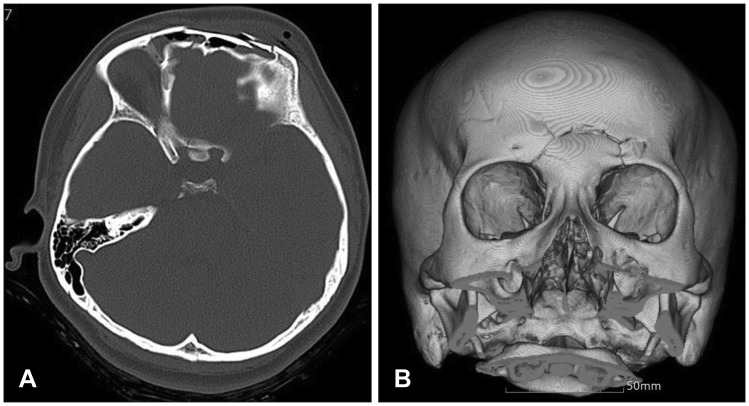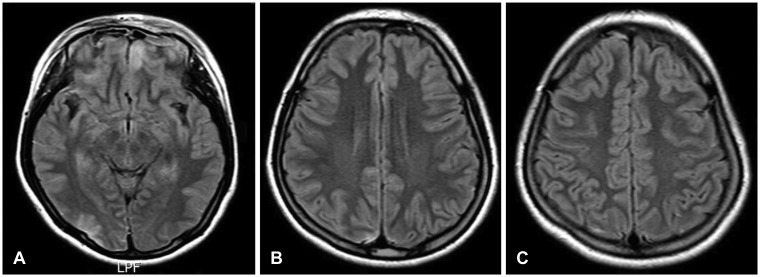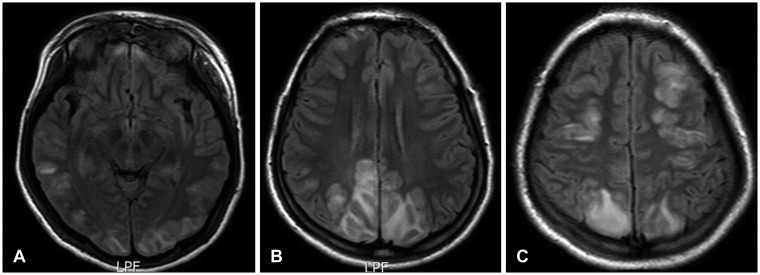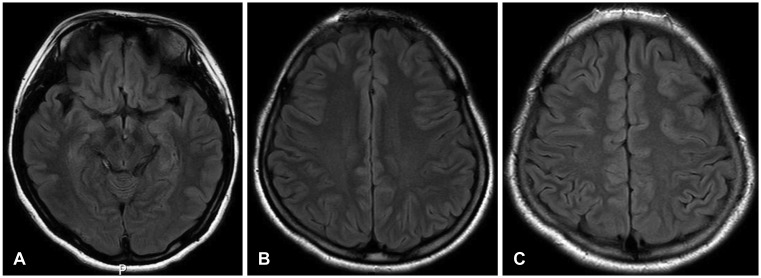The most common clinical manifestations of PRES are headache, nausea and vomiting, altered mental status, decreased alertness, seizures, cortical blindness, and transient motor deficits. In the patients with PRES, seizures are common at the onset of neurologic symptoms but can also develop later. The seizures are usually GTC type and/or multiple. Temporary restlessness and agitation may alternate with lethargy. Stupor and coma may develop. The patients are often confused and there may be some abnormalities of vision such as hemianopia, blurred vision, and cortical blindness.
1214) Many predisposing factors have been proposed including hypertensive crisis, immunosuppressive drugs, eclampsia, and renal dysfunction. But, there were some differences in the etiological factors between the children and the adults, as in the clinical features. Although significant elevation of the BP may not always be demonstrated, hypertension has often been emphasized as a common feature of PRES-associated conditions.
1) The pathophysiology underlying PRES is yet thoroughly demonstrated. Two theories are considered in the pathophysiology of PRES, the first being sudden increase in BP causing vasospasm and the other being failure of autoregulatory mechanism.
13) With sudden elevation in systolic BP, the autoregulatory capacity of brain vasculature is exceeded which results in a region of vasodilatation and vasoconstriction, especially in the arterial boundary zone. This causes breakdown of the blood-brain barrier with subsequent transudation of fluid along with hemorrhage.
12) The preferential involvement of the posterior circulation has been postulated as being due to the sympathetic innervation protecting the brain from sudden increase in BP being relatively less in the arterioles supplied by the vertebrobasilar system than in the anterior circulation.
7) Considering the rare frequency of arteriosclerosis and good plasticity of vessel walls in children, the vulnerability of vessel walls to hypertension might be decreased in childhood.
8) But noteworthy, children sometimes may be regarded to be more vulnerable to cerebrovascular dysfunction than adults under systemic hypertension because they have a narrower range of autoregulation in cerebral blood flow.
3) Thus, it is possible that pediatric patients are more susceptible to PRES, and if so, this could be underrecognized in the literature.
10) Postoperative hypertension is a common complication resulting from surgical intervention and occurs not only in those with pre-existing uncontrolled hypertension, but also in those who were normotensive or well controlled with medication. Given these characteristics, in our case, we thought PRES might be occurred due to post-operative transient hypertension. Some case reports show that CSF leak and intracranial hypotension can cause PRES.
24) In this case, there is no evidence of CSF leak in the first stage of PRES, therefore it is reasonable that postoperative hypertension cause PRES. The symptoms and lesions of PRES may resolve completely if the diagnosis and treatment is prompt, as was seen in our patient. However, failure to diagnose may lead to irreversible infarction and death.
69) Recurrence of PRES is rare and may be associated with infections and rapid rise in BP.
13) The diagnosis may be overlooked, especially in children, unless a high index of suspicion and precise clinical history is maintained.







 PDF
PDF ePub
ePub Citation
Citation Print
Print



 XML Download
XML Download